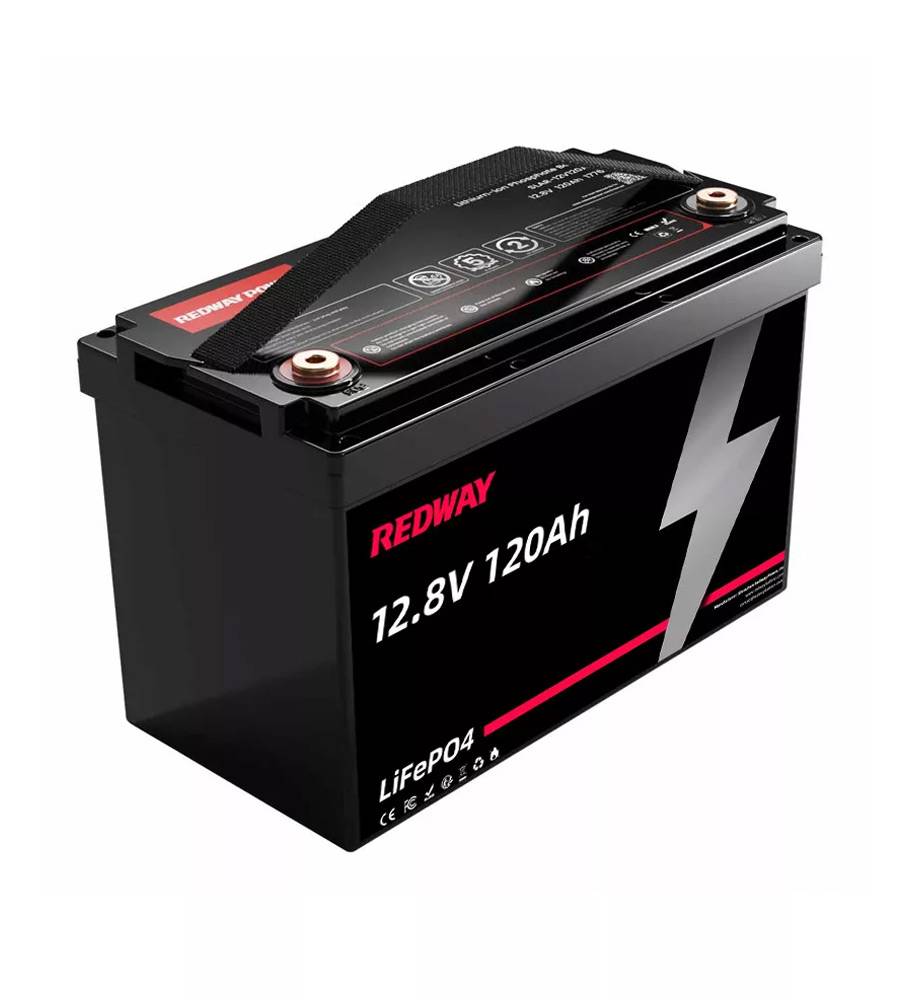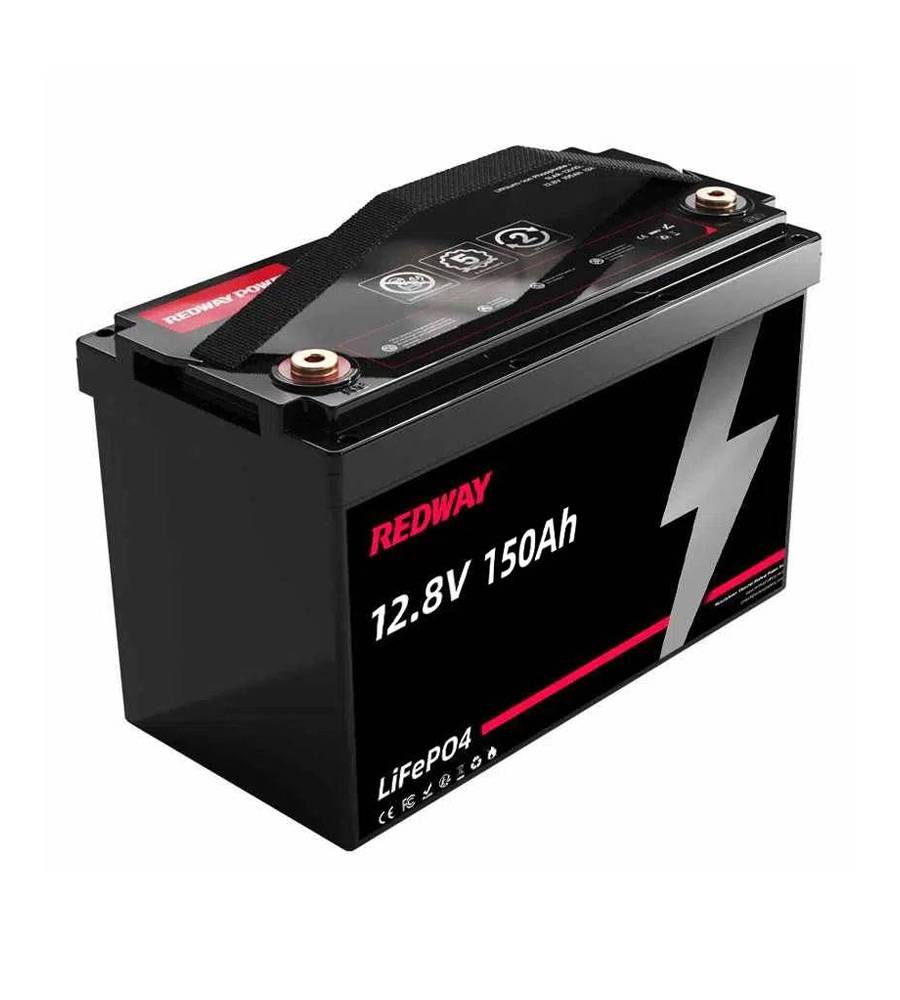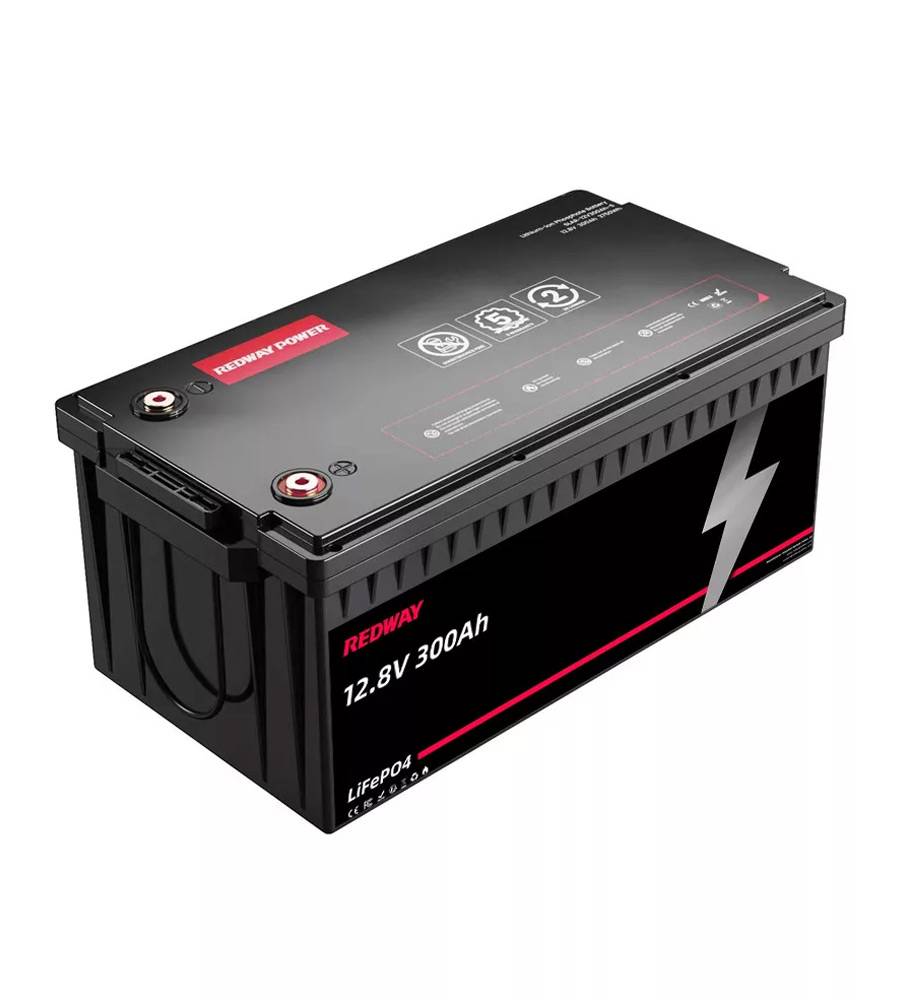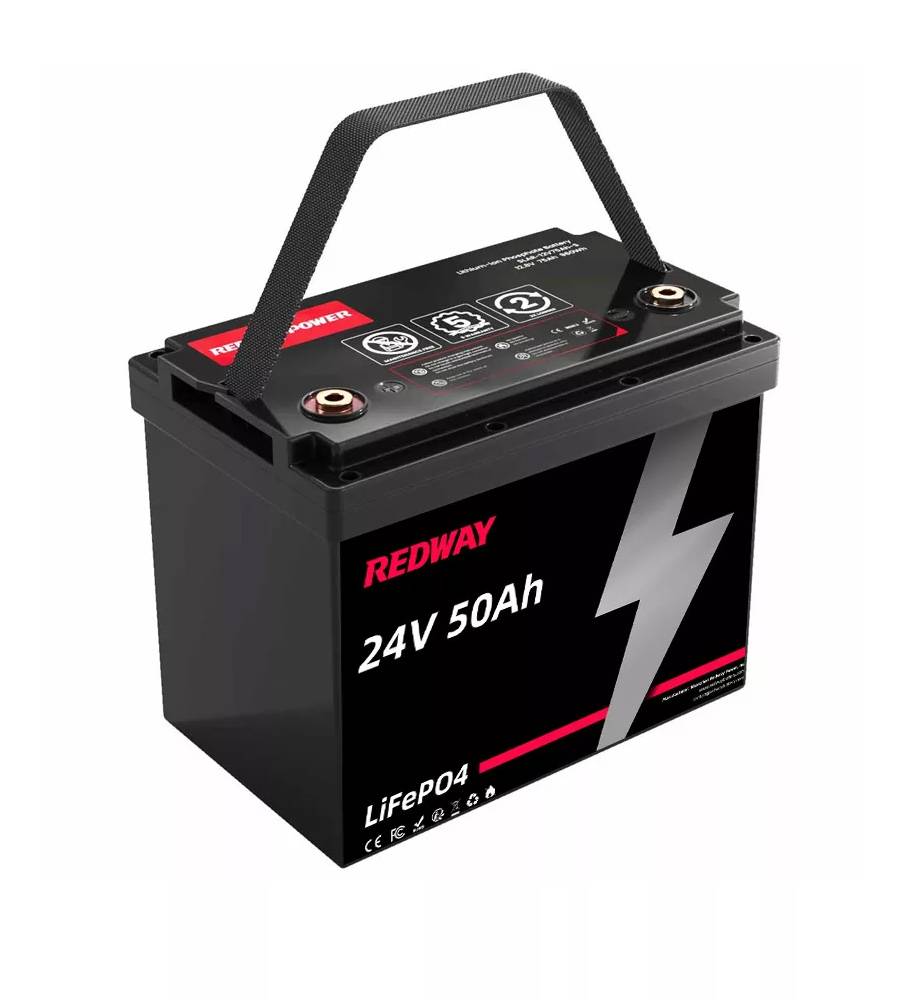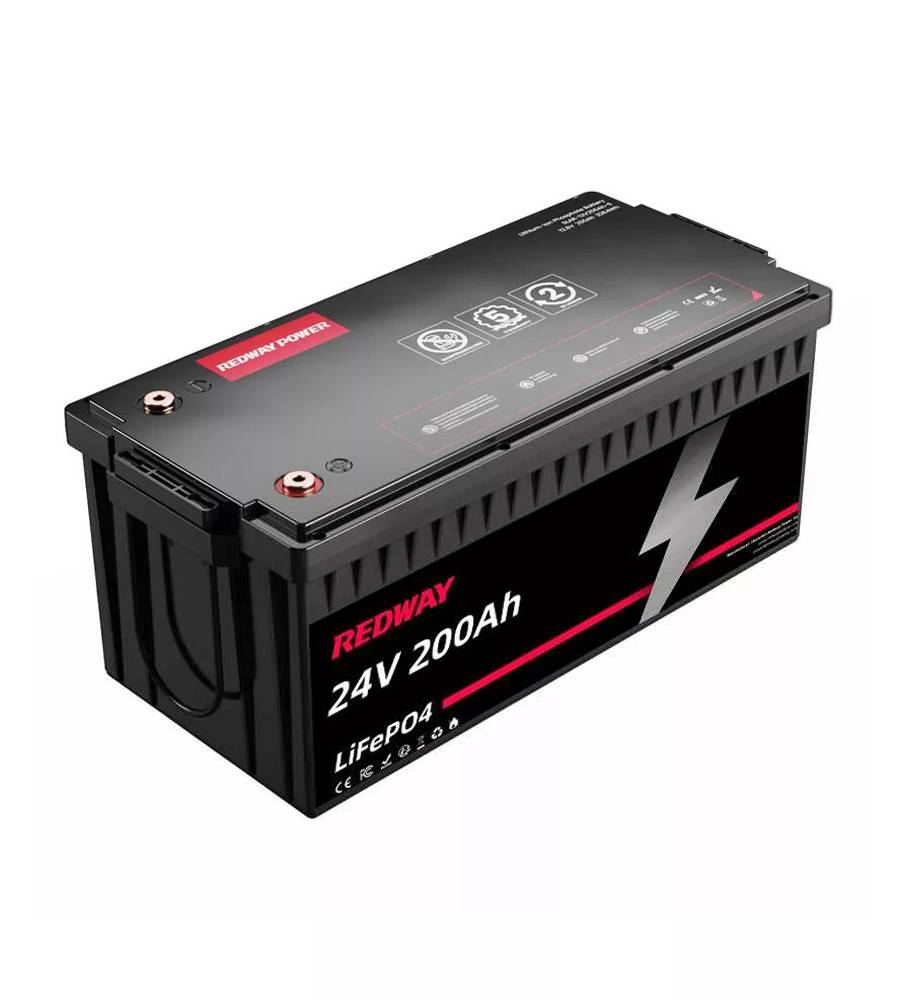- Forklift Lithium Battery
-
48V
- 48V 210Ah
- 48V 300Ah
- 48V 420Ah (949 x 349 x 569 mm)
- 48V 420Ah (950 x 421 x 450 mm)
- 48V 456Ah
- 48V 460Ah (830 x 630 x 590 mm)
- 48V 460Ah (950 x 421 x 450 mm)
- 48V 460Ah (800 x 630 x 600 mm)
- 48V 460Ah (820 x 660 x 470 mm)
- 48V 500Ah
- 48V 560Ah (810 x 630 x 600 mm)
- 48V 560Ah (950 x 592 x 450 mm)
- 48V 600Ah
- 48V 630Ah
-
48V
- Lithium Golf Cart Battery
- 12V Lithium Battery
12V 150Ah Lithium RV Battery
Bluetooth App | BCI Group 31
LiFePO4 Lithium
Discharge Temperature -20°C ~ 65°C
Fast Charger 14.6V 50A
Solar MPPT Charging - 24V Lithium Battery
- 36V Lithium Battery
- 48V Lithium Battery
-
48V LiFePO4 Battery
- 48V 50Ah
- 48V 50Ah (for Golf Carts)
- 48V 60Ah (8D)
- 48V 100Ah (8D)
- 48V 100Ah
- 48V 100Ah (Discharge 100A for Golf Carts)
- 48V 100Ah (Discharge 150A for Golf Carts)
- 48V 100Ah (Discharge 200A for Golf Carts)
- 48V 150Ah (for Golf Carts)
- 48V 160Ah (Discharge 100A for Golf Carts)
- 48V 160Ah (Discharge 160A for Golf Carts)
-
48V LiFePO4 Battery
- 60V Lithium Battery
-
60V LiFePO4 Battery
- 60V 20Ah
- 60V 30Ah
- 60V 50Ah
- 60V 50Ah (Small Size / Side Terminal)
- 60V 100Ah (for Electric Motocycle, Electric Scooter, LSV, AGV)
- 60V 100Ah (for Forklift, AGV, Electric Scooter, Sweeper)
- 60V 150Ah (E-Motocycle / E-Scooter / E-Tricycle / Tour LSV)
- 60V 200Ah (for Forklift, AGV, Electric Scooter, Sweeper)
-
60V LiFePO4 Battery
- 72V~96V Lithium Battery
- Rack-mounted Lithium Battery
- E-Bike Battery
- All-in-One Home-ESS
- Wall-mount Battery ESS
-
Home-ESS Lithium Battery PowerWall
- 24V 100Ah 2.4kWh PW24100-S PowerWall
- 48V 50Ah 2.4kWh PW4850-S PowerWall
- 48V 50Ah 2.56kWh PW5150-S PowerWall
- 48V 100Ah 5.12kWh PW51100-F PowerWall (IP65)
- 48V 100Ah 5.12kWh PW51100-S PowerWall
- 48V 100Ah 5.12kWh PW51100-H PowerWall
- 48V 200Ah 10kWh PW51200-H PowerWall
- 48V 300Ah 15kWh PW51300-H PowerWall
PowerWall 51.2V 100Ah LiFePO4 Lithium Battery
Highly popular in Asia and Eastern Europe.
CE Certification | Home-ESS -
Home-ESS Lithium Battery PowerWall
- Portable Power Stations
For Cars, RVs, Boats, Marines, etc.
BCI Group Lithium Batteries Factory Wholesale
BCI Group LiFePO4 Batteries, One-Stop Solution
Redway BCI Group LiFePO4 Batteries offer a comprehensive solution for various applications, particularly in the forklift industry. Renowned for their high energy density, these batteries are designed to maximize energy storage in compact spaces, making them ideal for forklifts. Their efficient design minimizes the risk of thermal runaway, enhancing safety in demanding environments.
Our expert team at Redway assists you in selecting the most suitable LiFePO4 Forklift Battery, utilizing advanced manufacturing processes tailored to your needs. As a leading lithium battery manufacturer specializing in OEM applications, we provide customization options for your LiFePO4 Forklift Batteries, including branding with your logo, design specifications, and size adjustments.

Redway BCI Group Battery Features
- >5000 Cycles (80% DOD 0.5C)
- RS485 + CAN bus Communication
- Automatic Production Lines
- Many Customer Orders
Redway Power for BCI Group Batteries OEM/ODM
Best LiFePO4 BCI Group Batteries Manufacturer
BCI Group Batteries Factory
When looking for wholesale LiFePO4 BCI Group batteries, consider Redway as your reliable partner. We offer a comprehensive range of lithium batteries, including various sizes and specifications to meet diverse energy needs. Our LiFePO4 batteries are known for their high energy density, long cycle life, and rapid charging capabilities, making them ideal for applications such as RVs, marine vehicles, and backup power systems.
What Are the Dimensions and Specifications of BCI Group 51R Batteries?
BCI Group 51R batteries typically measure approximately 9.375 inches long, 5.0625 inches wide, and 8.75 inches high. They are designed for starting applications and feature a cold cranking amp (CCA) rating ranging from 400 to 750, depending on the specific model.
What Is the BCI Group 70 Battery?
The BCI Group 70 battery is a lead-acid battery designed for automotive applications. It features dimensions of approximately 12.0 inches long, 6.9 inches wide, and 7.5 inches high, with a nominal voltage of 12V. This group size is commonly used in larger vehicles requiring higher power output.
What Does BCI Mean on a Battery?
BCI stands for Battery Council International, an organization that sets standards for battery sizes and specifications in the automotive industry. The BCI group number indicates the physical dimensions and terminal configurations of the battery, ensuring compatibility with various vehicles.
What is BCI Group Size in Batteries?
BCI group size refers to a standardized classification system that categorizes batteries based on their physical dimensions, terminal positions, and performance characteristics. This system helps consumers select compatible batteries for specific vehicles or applications.
How Can You Determine If a BCI Group 51 Battery Is the Right Fit for Your Vehicle?
To determine if a BCI Group 51 battery is suitable for your vehicle, check your owner’s manual for recommended battery specifications, including size and terminal configuration. Ensure that the dimensions and CCA ratings match your vehicle’s requirements.
Why Are BCI Group 51 and 51R Batteries Preferred for Certain Applications?
BCI Group 51 and 51R batteries are preferred for applications requiring compact size and reliable performance, such as in smaller vehicles like Honda and Nissan models. Their vibration resistance and dual-purpose capabilities make them ideal for both starting and auxiliary power needs.
What Is the Significance of the BCI Group Number for Car Batteries?
The BCI group number is significant because it provides essential information about the battery’s dimensions, terminal layout, and compatibility with specific vehicles. This standardization ensures that consumers can easily find the right battery for their automotive needs.
Why Is It Important to Know BCI Battery Group Sizes?
Knowing BCI battery group sizes is essential for ensuring compatibility with your vehicle or equipment. Each group size corresponds to specific dimensions and terminal configurations, preventing fitment issues that could cause damage. Additionally, selecting the correct size optimizes performance and ensures reliable power delivery.
What Are the Main Features of BCI Group 75 Batteries?
BCI Group 75 batteries are typically designed for high-performance applications, featuring a compact size of approximately 9.1 inches long, 6.5 inches wide, and 7.5 inches high. They offer a cold cranking amp (CCA) rating of around 600-700, making them suitable for various vehicles requiring reliable starting power.
Where Are BCI Groups U1 and U1R Batteries Used?
BCI Groups U1 and U1R batteries are commonly used in applications such as lawn and garden equipment, small boats, and backup power systems. Their compact size and lightweight design make them ideal for powering small engines and providing reliable energy in limited spaces.
How Are BCI Group 96R Batteries Used in Autos?
BCI Group 96R batteries are often used in European vehicles and some Asian models. They feature a unique terminal layout and dimensions that fit specific automotive applications, providing reliable starting power with a cold cranking amp (CCA) rating typically around 600-800.
What You Need to Know About BCI Group 59 Batteries
BCI Group 59 batteries are designed for use in certain automotive applications, particularly in vehicles requiring a compact battery with reliable performance. They typically have dimensions of about 9.5 inches long, 6.9 inches wide, and a CCA rating ranging from 500 to 700.
What Are the Uses of BCI Groups 58 and 58R Batteries?
BCI Groups 58 and 58R batteries are commonly used in various automotive applications, including sedans and light trucks. Their compact size and sufficient power output make them suitable for starting engines while supporting electrical accessories in modern vehicles.
What Are the Uses of BCI Group 55 Batteries?
BCI Group 55 batteries are often utilized in vehicles that require compact batteries with moderate power output. They are commonly found in smaller cars, light trucks, and some recreational vehicles, providing reliable starting power and supporting basic electrical functions.
What Are the Common Mistakes with Incorrect BCI Battery Group Sizes?
Common mistakes with incorrect BCI battery group sizes include selecting a battery that does not fit properly, leading to physical damage or electrical failures. Additionally, using an incompatible battery can disrupt power flow, reduce performance efficiency, and potentially damage vehicle components.
How to Choose the Right BCI Group Size 34 Battery for Medium-Sized Vehicles
To choose the right BCI Group Size 34 battery for medium-sized vehicles, check your owner’s manual for specifications on dimensions and power requirements. Ensure that the battery’s cold cranking amps (CCA) meet your vehicle’s needs for reliable starting in various conditions.
What You Need to Know About BCI Group U1 and U1R Batteries for Industrial Use
BCI Groups U1 and U1R batteries are often utilized in industrial applications due to their compact size and lightweight design. They provide reliable energy for equipment such as forklifts, pallet jacks, and other machinery requiring dependable power in confined spaces.
How to Replace Your Car Battery with the Correct BCI Group Size
To replace your car battery with the correct BCI group size, first consult your vehicle’s owner manual for the recommended group size. Remove the old battery by disconnecting the negative terminal first, then the positive. Install the new battery, ensuring it matches the group size and securely reconnect the terminals.
How to Maintain BCI Group Size Batteries for Optimal Performance?
To maintain BCI group size batteries for optimal performance, regularly check and clean battery terminals to prevent corrosion. Ensure the battery is securely mounted and free from moisture. Charge the battery fully and avoid deep discharges, as this can shorten its lifespan. Additionally, store batteries in a cool, dry place.
How to Choose the Right BCI Group 51R Battery for Your Compact Car
To choose the right BCI Group 51R battery for your compact car, consult your owner’s manual for specifications. Ensure the battery’s dimensions and terminal layout match your vehicle’s requirements. Check the cold cranking amps (CCA) rating to ensure reliable starting power in various conditions.
How Do BCI Group 24 and Group 27 Batteries Compare in Capacity and Size?
BCI Group 24 batteries typically measure about 10.25 inches long, 6.75 inches wide, and have a capacity of around 70-85 Ah. In contrast, Group 27 batteries are larger at approximately 12 inches long and offer higher capacities of 90-115 Ah. The choice depends on your specific power needs.
How to Guide to BCI Battery Dimensions and Specifications
A guide to BCI battery dimensions and specifications includes understanding the physical sizes associated with each group number. Each group size corresponds to specific dimensions, terminal configurations, and performance characteristics. This ensures compatibility with vehicles and devices, preventing fitment issues and optimizing performance.
Why Understanding BCI Group Numbers Is Essential for Battery Compatibility
Understanding BCI group numbers is essential for ensuring proper battery compatibility with your vehicle or equipment. Each number indicates specific dimensions, terminal arrangements, and performance characteristics, allowing users to select batteries that fit correctly and function effectively without causing damage or inefficiencies.
How to Select the Right BCI Battery Group Size for Your Vehicle
To select the right BCI battery group size for your vehicle, consult your owner’s manual or a battery replacement guide. Consider factors such as physical dimensions, terminal configuration, cold cranking amps (CCA), and application requirements to ensure optimal performance and compatibility.
How to Understand BCI Group Sizes for Car Batteries
To understand BCI group sizes for car batteries, familiarize yourself with how each size is categorized based on physical dimensions, terminal layout, and performance characteristics. Each group number corresponds to specific measurements that ensure compatibility with various vehicles, helping you choose the right battery for your needs.
Inquiry Now
















